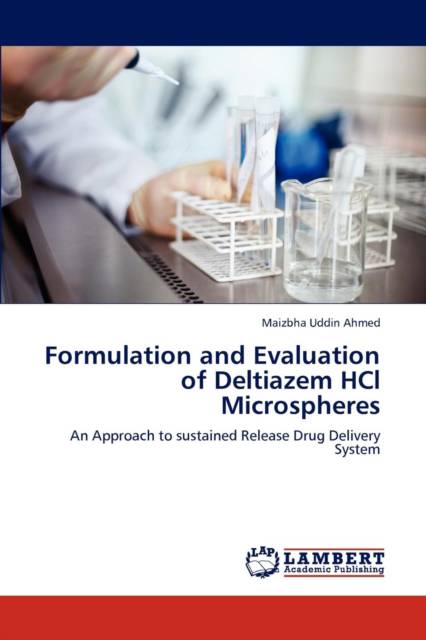
- Afhalen na 1 uur in een winkel met voorraad
- Gratis thuislevering in België vanaf € 30
- Ruim aanbod met 7 miljoen producten
- Afhalen na 1 uur in een winkel met voorraad
- Gratis thuislevering in België vanaf € 30
- Ruim aanbod met 7 miljoen producten
Zoeken
Formulation and Evaluation of Deltiazem HCl Microspheres
An Approach to sustained Release Drug Delivery System
Maizbha Uddin Ahmed
Paperback | Engels
€ 48,45
+ 96 punten
Omschrijving
The goal in designing sustained release is reduce the frequency of dosing or to increase the effectiveness of the drug by localization at the site of action, reducing the dose required or providing the uniform drug delivery. The use of controlled release (CR) formulations offers many potential advantages such as, sustained blood levels attenuation of adverse effects and improved patient's compliance. It is important especially in the case of antihypertensive agents, to maintain constant blood levels, as other wise, dose dumping may cause hypo tension and sub-therapeutical levels may cause hypertension. The objectives of the present study was to Develop sustained release DTZ microsphere by using different drug-polymer ratio, in vitro characterization of DTZ, maintain more uniform drug plasma concentration, reduce dosing frequency, avoidance of night time dosing, to estimate drug release profile of the formulations, to choose the best formulation(s) based on the above evaluations and finally to subject the most satisfactory formulation(s) to accelerated stability studies.
Specificaties
Betrokkenen
- Auteur(s):
- Uitgeverij:
Inhoud
- Aantal bladzijden:
- 96
- Taal:
- Engels
Eigenschappen
- Productcode (EAN):
- 9783844327397
- Verschijningsdatum:
- 14/08/2012
- Uitvoering:
- Paperback
- Formaat:
- Trade paperback (VS)
- Afmetingen:
- 152 mm x 229 mm
- Gewicht:
- 149 g

Alleen bij Standaard Boekhandel
+ 96 punten op je klantenkaart van Standaard Boekhandel
Beoordelingen
We publiceren alleen reviews die voldoen aan de voorwaarden voor reviews. Bekijk onze voorwaarden voor reviews.











